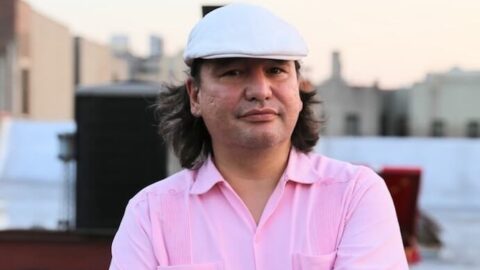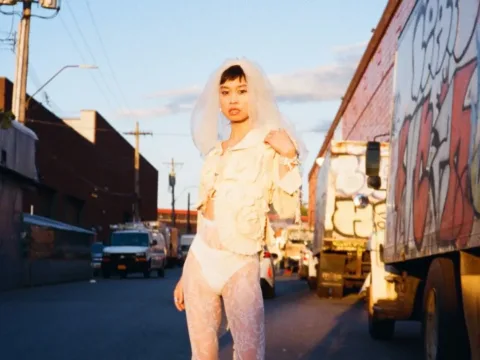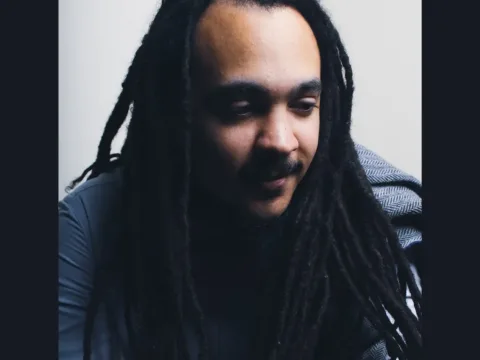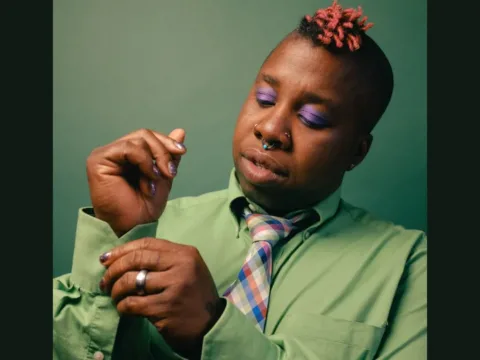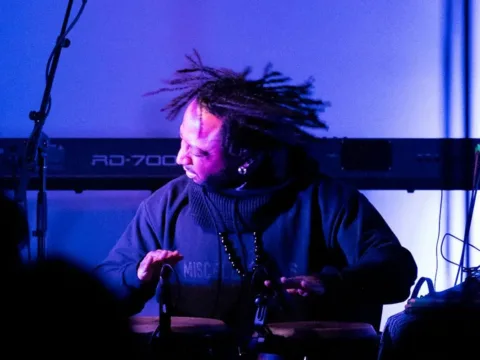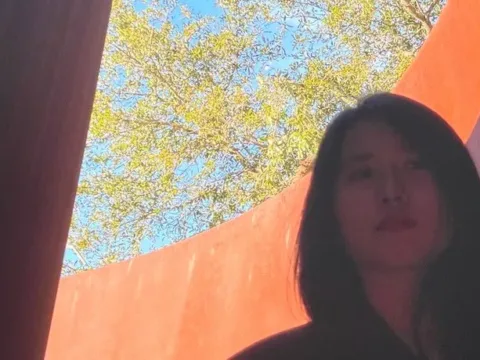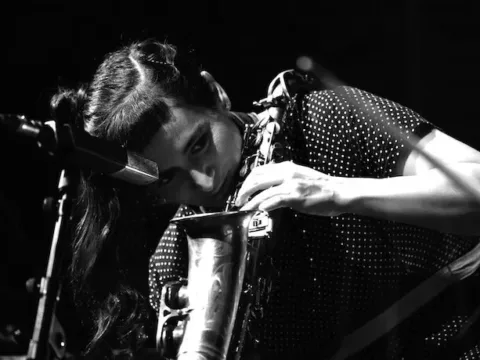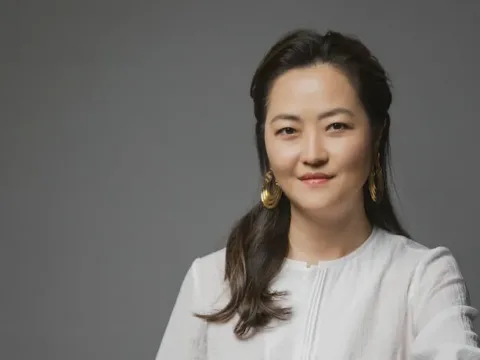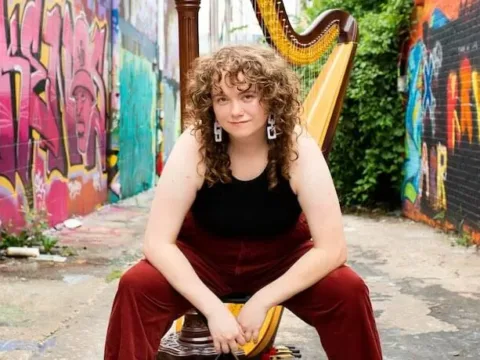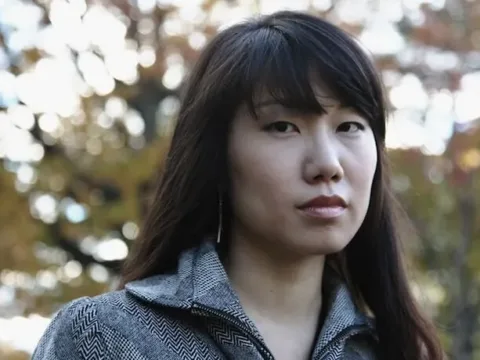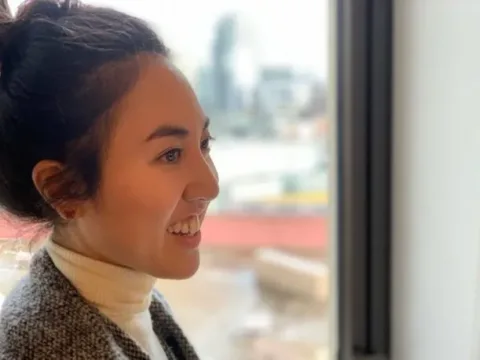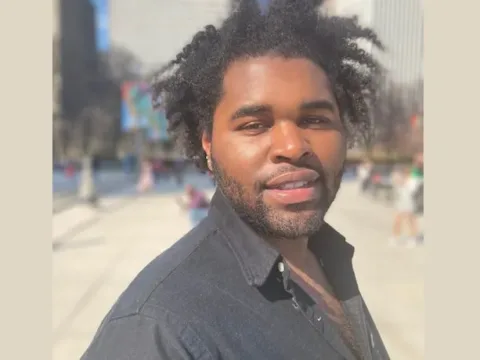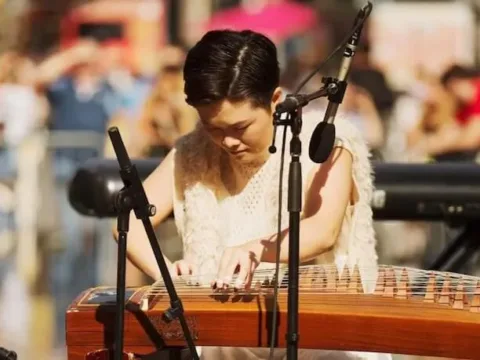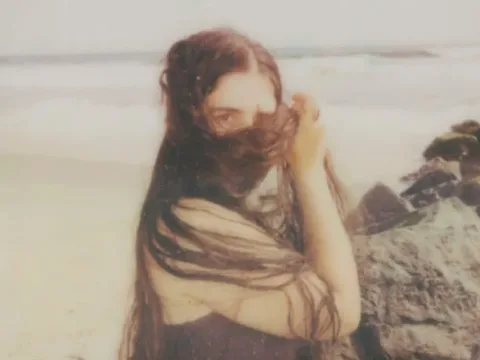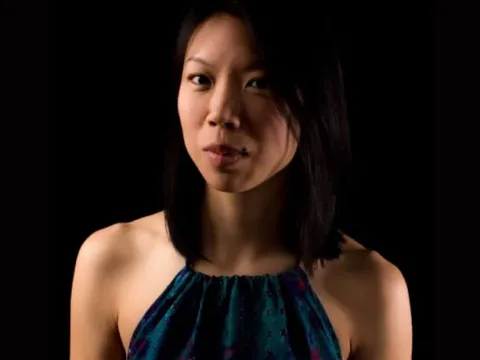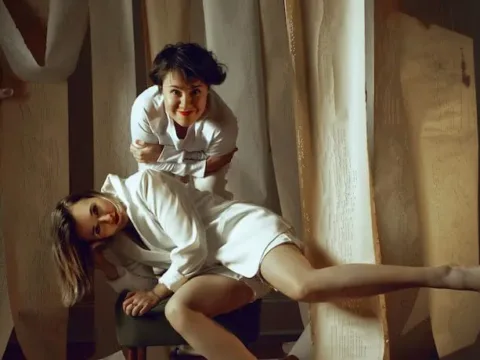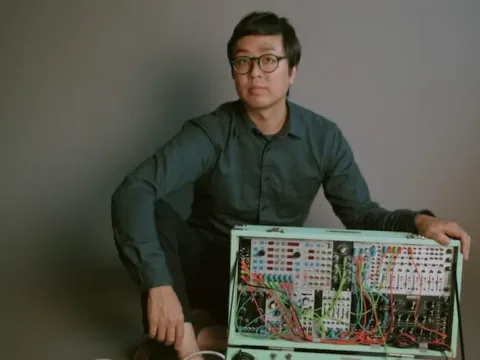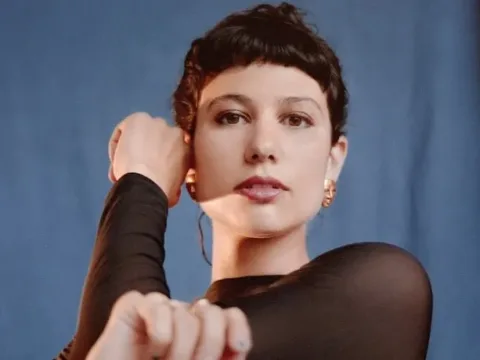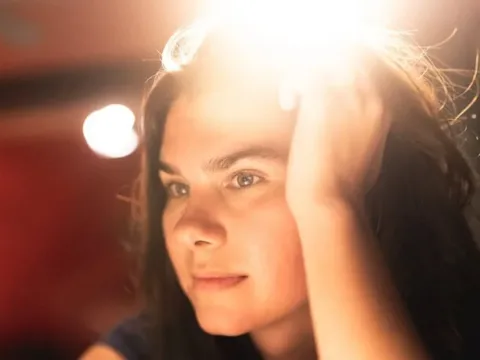ListN Up is a series of artist-curated playlists that offer an intimate sonic portrait of contemporary artists by showcasing the diverse and stylistically varied music that influences their creative practice.
Jorge Sosa is a Mexican-born composer, currently residing in New York City. Opera News described his telematic opera Alice in the Pandemic as “wildly imaginative, musically powerful and technically courageous.” In recent years Jorge has focused on opera, social justice, technology, and the intersections between them. Jorge is an associate professor at Molloy University. His music is available on all the major music download sites and through the website www.jorgesosa.com.
Hello everyone, my name is Jorge Sosa. I am a composer originally from Mexico City and I currently live in New York. Thank you Amanda Cook, I CARE IF YOU LISTEN, American Composers Forum, and innova Recordings for inviting me to curate this playlist. So, for this playlist I wanted to share some songs that are very dear to my heart; they are all mostly Mexican music from across different eras, and I wanted to show some of the foundational styles of music that have helped to shape my musical language. So on this playlist you’ll hear some boleros, canción ranchera, some rock music and mambo. And I wanted to pair those songs with some of my own compositions, so you’ll get to hear some examples of my vocal writing, my opera, my orchestral writing, and hopefully you can hear some of the connections between my own musical practice and traditional Mexican music. So, thank you everyone, I hope you enjoy the music. Please follow me on social media and feel free to contact me through my website www.jorgesosa.com and my YouTube channel. Thanks again and I hope you enjoy the playlist!
“Paloma Negra” by Chavela Vargas
I am intensely drawn to the extreme emotion that Chavela Vargas brings to her performance. That sense of drama is characteristic of the “Canción Ranchera,” a type of traditional Mexican ballad that became very popular during the first half of the 20th century, and was disseminated widely by radio. One of the foundational moments for me was performing these songs with my late grandfather Jesus and my dad Jorge, at parties and family gatherings, surrounded by the people that I love the most.
“Generación Perdida.” mvt. 10, ‘Yermo’ (Barren), by Jorge Sosa, based on the book by Javier Moro Hernandez, performed by Victoria Vargas, mezzo-soprano; Lara Bolton, piano
Generación Perdida. is based on the book by Javier Moro Hernandez, who wrote a bone-chilling narrative about the more than 100,000 people who have been forcibly disappeared in Mexico over the last decade, as a direct result of the futile war on drugs. My generation has been marked by violence. We grew up hearing the folk tales of the marijuana smugglers in the 80s, we experienced the political assassinations of the 2000s, the cartel wars of the 2010s and now the wide dissemination of heavily-armed paramilitary gangs. You can hear the influence of Ranchera songs, infusing my music with a deep pathos.
“Dos Gardenias” by La Sonora Santanera, featuring Diego “El Cigala”
This is an interesting example of diversity within Latinx music. The bolero is a genre that originates in Cuba and flourished in Mexico during the first half of the 20th century. Subsequently many Mexican songwriters adopted the genre and exported their songs to Cuba, the United States, and other parts of Latin America. To add to the mixture, Diego “El Cigala” brings his Flamenco style to this performance. Andalusia, in Southern Spain, was under Muslim rule for more than 500 years, and that connection to the Arab world is still audible in Flamenco music.
“Mambo #5” by Dámaso Pérez Prado y su Orquesta
Mambo is the music of the “Pachucos” or “Zoot Suiters” who were Latinx migrants, and first-generation born in the United States. During World War II there was an influx of Mexican migrants coming to the U.S. as part the Bracero Program, which brought Mexican guest workers to the United States while most white men were enlisted for military service. Pachucos wore baggy clothes, danced mambo, and were often repressed by the police and the authorities. The pulsating rhythms and syncopated layers of ostinatos are some of the characteristics of mambo that have influenced my own writing.
“Son de Harlem for String Orchestra” by Jorge Sosa, performed by Washington Heights Chamber Orchestra (Chris Whittaker, conductor)
I have been living in different parts of Harlem for the last 15 years, and I am grateful to be part of a community with such a rich, cultural and musical tradition. The first movement is a slow bolero, inspired by “Dos Gardenias.” The second movement is titled “Between Bartok and Pérez Prado,” and is influenced by the sounds of mambo mixed with the harmonic colors, and pulsating rhythms of Bartok. I wrote “Son de Harlem” in the latter days of the COVID pandemic and it’s dedicated to my neighbors, as we went through this highly traumatic experience together.
“La 1a. Calle de La Soledad” by Cecilia Toussaint y Arpía (music and Lyrics by Jaime López)
During the 1980s, the Mexican government took an active role in suppressing rock music as it was seen as an essential part of the counterculture. If you wanted to see a rock band you had to go to the most marginalized areas of Mexico City. I love the video of this song because it shows the city where I grew up. You can see shots of downtown Mexico City, La Merced, The Cathedral and images of the death-defying experience that can be riding public transport in one of the biggest, and most chaotic cities in the world.
“Alice in the Pandemic, a digital opera, Scene 2” by Jorge Sosa, libretto by Cerise Lim Jacobs, performed by Tian Hui Ng, conductor; Caramie Hilaire, Alice; Daniel Moody, The White Rabbit. (Commissioned by White Snake Projects; Elena Araoz, director)
The next track is the subway scene from Alice and the Pandemic, a telematic opera that was created, produced, and performed remotely during COVID. I wanted to share this scene because it brings several of my core musical building blocks together. Storytelling, writing for the operatic voice, the driving rhythms of rock music, the urban soundscape, and electronic music all come together in this excerpt. I used several field recordings, and used the sounds of the train as the rhythmic foundation for the piece.
“Cada Noche un Amor” by Toña la Negra (music and lyrics Agustin Lara)
The Bolero is a repertoire that in my opinion rivals the European art songs of the Romantic era in musical and lyrical quality. I love the timbre of Toña La Negra’s voice. That deep alto range brings such depth to the song, and it’s one of the reasons why I am so drawn to it. Even though many of the songs she performs are about unrequited love, longing, or abandonment, she never comes across musically as being weak. On the contrary, her performance brings out a sense of power and pride that frames the character of the music.
“I Am A Dreamer Who No Longer Dreams, Scene 1,” by Jorge Sosa, libretto by Cerise Lim Jacobs, performed by Carla Lopez-Speziale, mezzo-soprano; Helen Huang, soprano; Juventas New Music Ensemble; Maria Sensi-Sellner, conductor; and Boston Children’s Chorus (Elena Araoz, director)
We began work on this project in 2016 when the anti-immigrant rhetoric was flaring up in the United States, and we wanted to write a work that addressed the toxic narratives that were being spread by politicians, seeking to gain power by diminishing the rights of migrants. At 10 minutes into the scene we hear Rosa’s title aria, scored as a bolero. To me, the bolero gives Rosa a sorrowful voice, but it is not a voice that is defeated: it is a voice that is finding the strength to take on the difficult path that lies ahead.
Thank you for listening to my playlist. Please feel free to contact me through my website, www.jorgesosa.com, and follow me on social media (IG dr_jorgesosa), Facebook and YouTube.
I CARE IF YOU LISTEN is an editorially-independent program of the American Composers Forum, and is made possible thanks to generous donor and institutional support. Opinions expressed are solely those of the author and may not represent the views of ICIYL or ACF.
You can support the work of ICIYL with a tax-deductible gift to ACF. For more on ACF, visit the “At ACF” section or composersforum.org.
